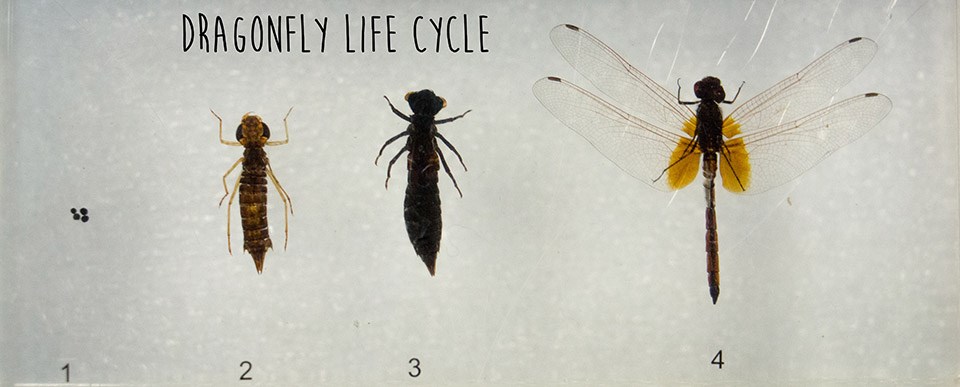Last updated: June 16, 2020
Article
#Sciencedeskdigs: Dragonfly Life Cycle

NPS Photo/ M.Reed
What is it?
This is a display of the different life cycles of the dragonfly. I keep it on my desk because it embodies the “Dragonfly Mercury Project” (DMP), a citizenscience project I helped start. National parks like Denali, Big Cypress, and Apostle Island all participate in the DMP and collect dragonfly larvae (aka “juveniles”) with students and visitors. Then, we sample the larvae for mercury levels. In a way, collecting dragonfly samples for mercury is like taking the pulse of the park. The National Park Service protects our natural resources, and mercury is a toxic pollutant that can harm resources like human and wildlife health, which is why projects like this are so important!
Why do we collect the larvae instead of adult dragonflies? Even though you probably see the adult more often, dragonflies actually spend most of their lives in the larval stage underwater. The 5-7 years spent underwater gives them more than enough time to accumulate mercury in their bodies, making them great representations of that area. Plus, they're much easier to catch than the fast-flying adults!
If you want learn more about the "Dragonfly Mercury Project", watch the Blue Skies and Dragonflies episode of Outside Science (inside parks), our webisode series about science in parks.
Describe your workspace in one word:
Transformative- like dragonflies. My office is a work in progress!
